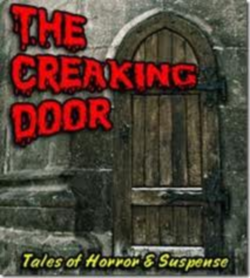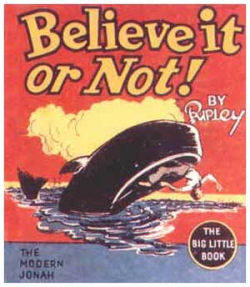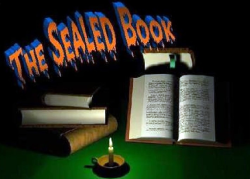The Strange Wills:
Treasure to Starboard (07/13/46).
The Sealed Book:
Death Spins a Web (45-04-01).
CBS Radio Mystery Theater:
The Walking Dead (05/76)
Robert L. Ripley’s Radio Scrapbook:
Witchcraft (08/04/47)
Right Click here to download
![]()
Strange Wills from July the 13th of 1946 “Treasure to Starboard”.
Strange Wills was made for syndication in 1946 by Teleways and is an interesting twist on the mystery drama fare of the late 1940s. Co created by Teleways and the star of the program, Warren William (who was at the time a significant stage and film star but who is now little remembered except for his portrayal of Perry Mason in four Warner Bros. features between 1934 and 1936).This program held unusually high production values. At it’s core is an ensemble cast of high caliber. Headed by the host and star, Warren William, and co-starring Howard Culver and Carleton G. Young. Lurene Tuttle also appeared in many of the episodes, as well as William Conrad, Peggy Webber, Will Wright and John Brown. In short, some of the best West Coast’s voice talent on tap at the time.
The series premise is the investigation of the fascinating–but often overlooked–drama that arises from many last wills and testaments. With Warren William providing a first-person accounting as either the attorney of record or as an investigator of some extraordinary will.
In the opening set-up of each episode some effort is made to assure us of the authenticity of these stories. Perhaps it’s just a function of my own innate skepticism, but be that as it may, I would admonish you not to take these proclamations as gospel. I will say that this show waswell made with excellent sound quality and performances.
“This is a story of sunken treasure. Of blood red rubies, sparkling diamonds, and lustrous pearls. But these were but a part of this priceless treasure trove. There were golden statues of pagan gods encrusted with precious stones. There were amethysts, opals, and gold … gold … GOLD …“
Another adventure story, started out all too similar to “The Lady and the Pirate” with Captain Fernandez of the treasure ship Toledo making out his will … in 1703. But quickly over 200 years pass before whereabouts of the ship fall into the hands of O’Connell’s friends Paul and Jean. The hunt is on but will the intercession of German treasure hunters foil Paul and Jean’s quest? The post-WWII Germans, who are I assume Nazis in exile, are what makes “Treasure to Starboard” interesting.
The Sealed Book, “Death Spins A Web”, April 1, 1945.
As with The Mysterious Traveler that preceded it, The Sealed Book was an anthology of supernatural drama, produced and directed by Jock MacGregor for the Mutual network, and written by the extraordinary team of Robert Arthur and David Kogan. Indeed this same entire team of network, director, and writers were responsible for the entire run of The Mysterious Traveler. Going even further, The Sealed Book reprised 26 of the Arthur/Kogan scripts written for The Mysterious Traveler. And in yet another similarity, Philip Clarke performed as an actor in five of the original Mysterious Traveler episodes.
Where the series’ differed was in the ‘hook’ or novelty intro to each week’s new episode. With The Mysterious Traveler, the atmospheric element was the mournful whistle of the train, and Maurice Tarplin’s equally exaggerated exposition at the beginning of each episode. With The Sealed Book, each episode opened with the sound of the great gong, followed by Philip Clarke’s observation that the Keeper of The Book had once again opened the door to the secret vault, within which was contained the ‘great sealed book’ recording ‘all the secrets and mysteries of mankind through the ages.’
At the end of all but the last episode, Clarke would tell listeners to tune in the following week when “the sound of the great gong heralds another strange and exciting tale from… the sealed book.”
Granny should be dead soon. I mean she’s really old. Got lots of money and as far as her grandchildren can see no reason to live. No reason she should live. Maybe the cousins, a girl, a girl and a boy can fix that. Real quiet like.
If they can get along long enough to get the job done that is.
CBS Radio Mystery Theater – “The Walking Dead”.
The CBS Radio Mystery Theater was an ambitious effort by veteran radio producer Himan Brown to revive interest in American radio drama. Every night from 1974 to 1982, host E.G. Marshall (later Tammy Grimes) ushered listeners through a creaking door — for 52 Min of “the fear you can hear.” Brown produced nearly 200 new episodes of Mystery Theater every year, using both original scripts and adaptations of classic stories by Edgar Allen Poe, Mark Twain,Robert Louis Stevenson and Sir Arthur Conan Doyle. The Mystery Theater brought many veterans from radio’s golden age back before the microphone, including Agnes Moorehead, Richard Widmark,Celeste Holm, Mercedes McCambridge and Howard Da Silva. The show also featured performances from many up-and-coming stage and film actors, including Tony Roberts, John Lithgow, Morgan Fairchild, Mandy Patinkin and Sarah Jessica Parker.
The CBS Radio Mystery Theater won the George A. Peabody Award in 1974.)

Fondly Fahrenheit is Alfred Bester’s superlative achievement in short Science Fiction. Apparently the story was based an account of an U.S. Antebellum Era slave owner who refused to surrender his murderous chattel because the man was just too valuable. In Fondly Fahrenheit Bester makes brilliant use of the psychological concept of transference, literally smacks you in the forehead with an allusion to Nathaniel Hawthorne’s The Scarlet Letter and employs POV shifts that effortlessly blow your consciousness right out of your mind (and into someone else’s)!
The story was adapted as a telepay in 1959 under the title Murder And The Android, an episode of NBC’s Sunday Showcase. But the version I want to tell you about is one that I hadn’t realized existed, until just a few days ago! Bester had again adapted his story, and again changed it’s name! Here is Alfred Bester’s own radio drama adaptation of Fondly Fahrenheit, from 1976 He called it The Walking Dead!.

Robert L. Ripley’s Radio Scrapbook – August the 4th of 1947 – “Witchcraft”.
Robert Ripley began his career as a sports cartoonist on the New York Globe, where in October of 1919 he created the print version of Believe It or Not.
In April 1930, Ripley brought Believe It or Not to radio, the first of several series that would wander the airwaves and be heard in different incarnations on NBC, CBS and Mutual . These broadcasts varied in length from 15 minutes to 1.
Ripley’s debut on The Collier Hour brought a strong reaction from the listeners . Knowing a good thing when they heard it, NBC gave Ripley a Monday night spot beginning on April 14, 1930. By 1931 He was airing spots twice a week on NBC’s Saturday Party.
Ripley would host The Baker’s Broadcast from 1935 to 1937. Between 1937 and 1938 He bounced around several different NBC time slots and then took to the road with, See America First with Bob Ripley (1939–40) on CBS. This program would mutate and expand into a 1942 program featuring Latin music, See All the Americas.
During World War II Ripley would be heard five nights a week on Mutual in shows with an emphasis on the war. Then came Romance, Rhythm and Ripley airing on CBS in 1945. From 1947 to 1948. Pages from Robert L. Ripley’s Radio Scrapbook.
The program ended in 1948 as Ripley and Believe It Or Not migrated to Television.
Finally the show was resurrected in the 1970s. When there were produced a series of over 400 one minute episodes for use as fillers.
Robert Ripley is known for several radio firsts. He was the first to broadcast nationwide on a radio network from mid-ocean, and he also participated in the first broadcast from Buenos Aires to New York. Assisted by a corps of translators, he was the first to broadcast to every nation in the world simultaneously.



Leave a comment